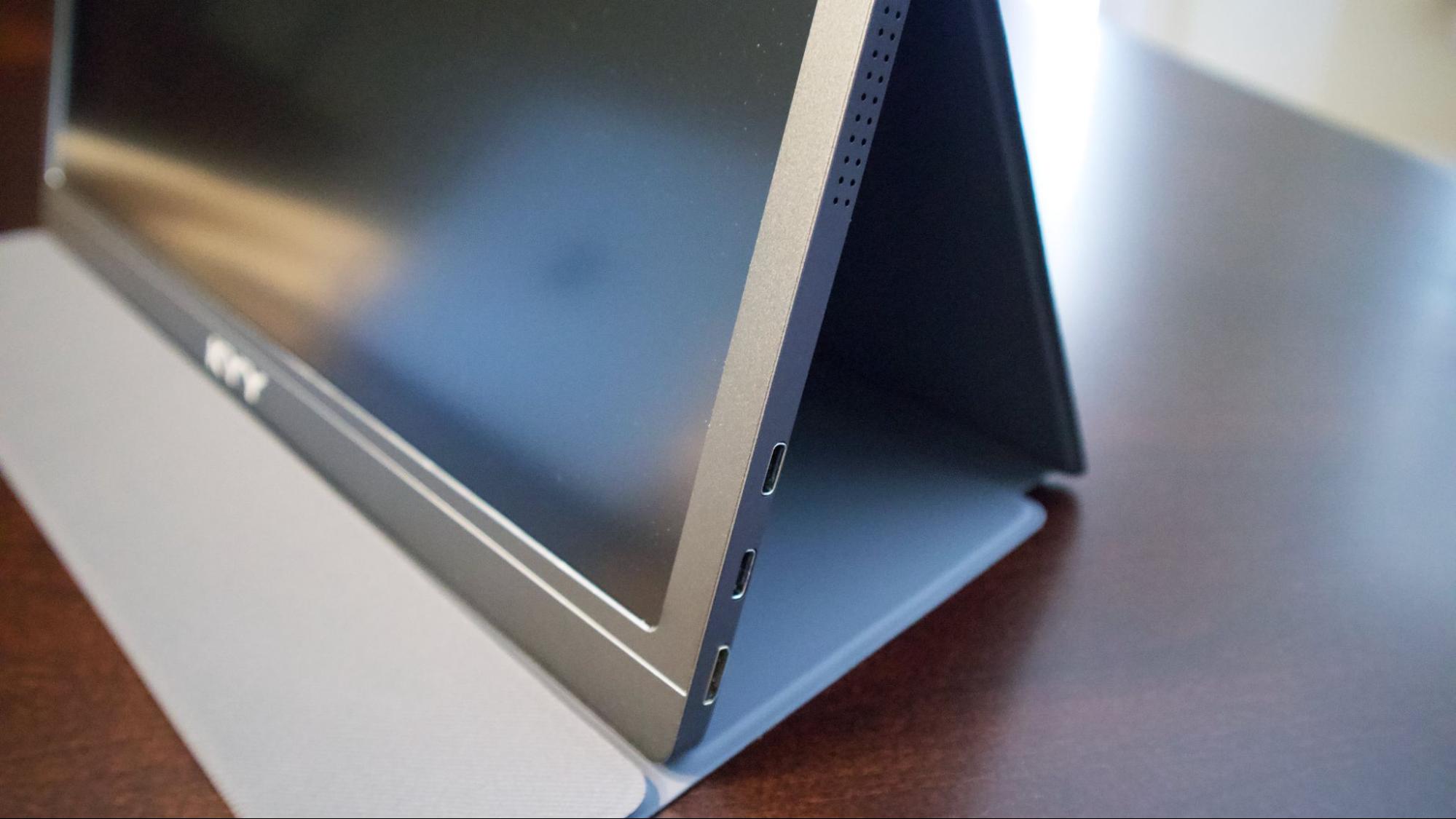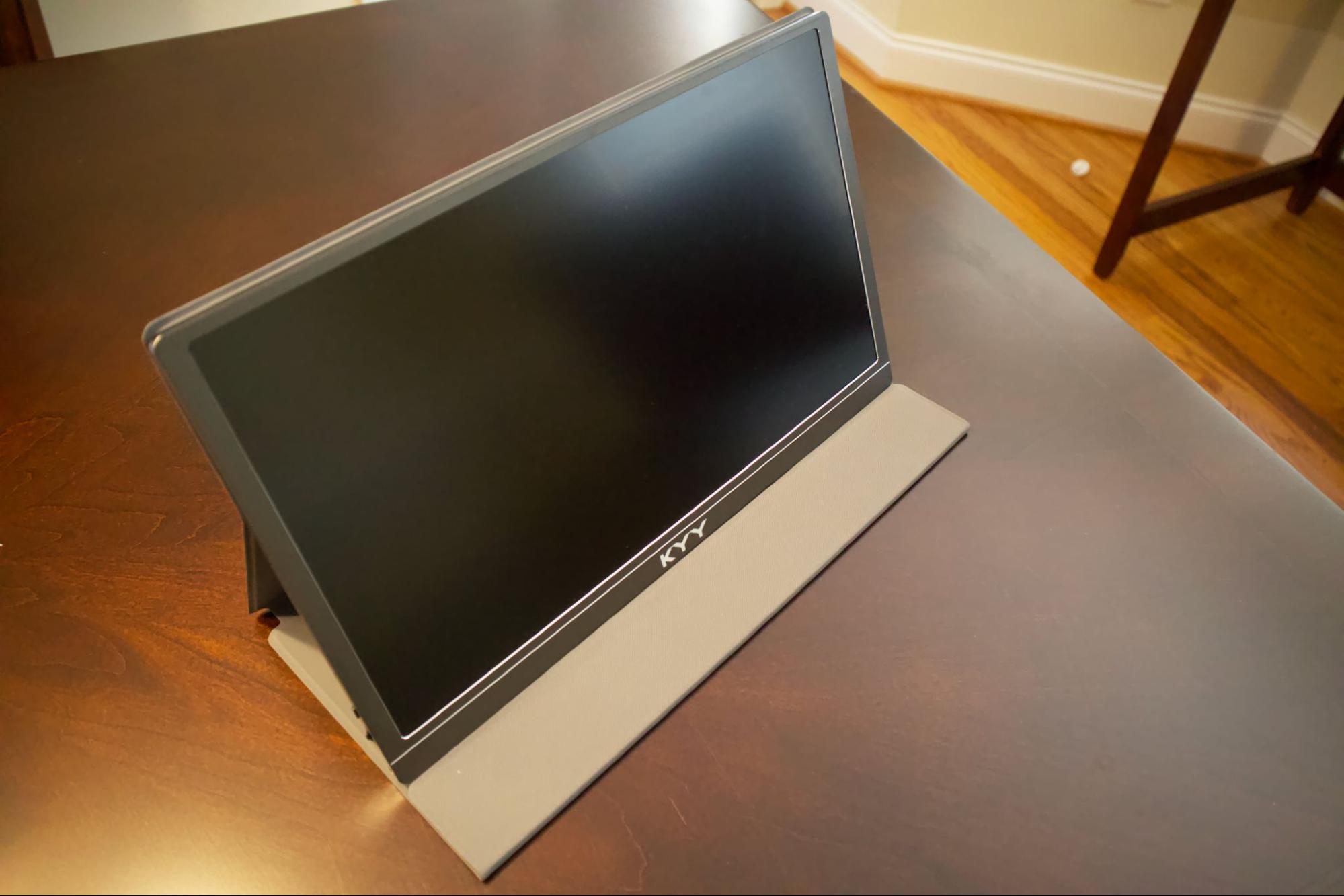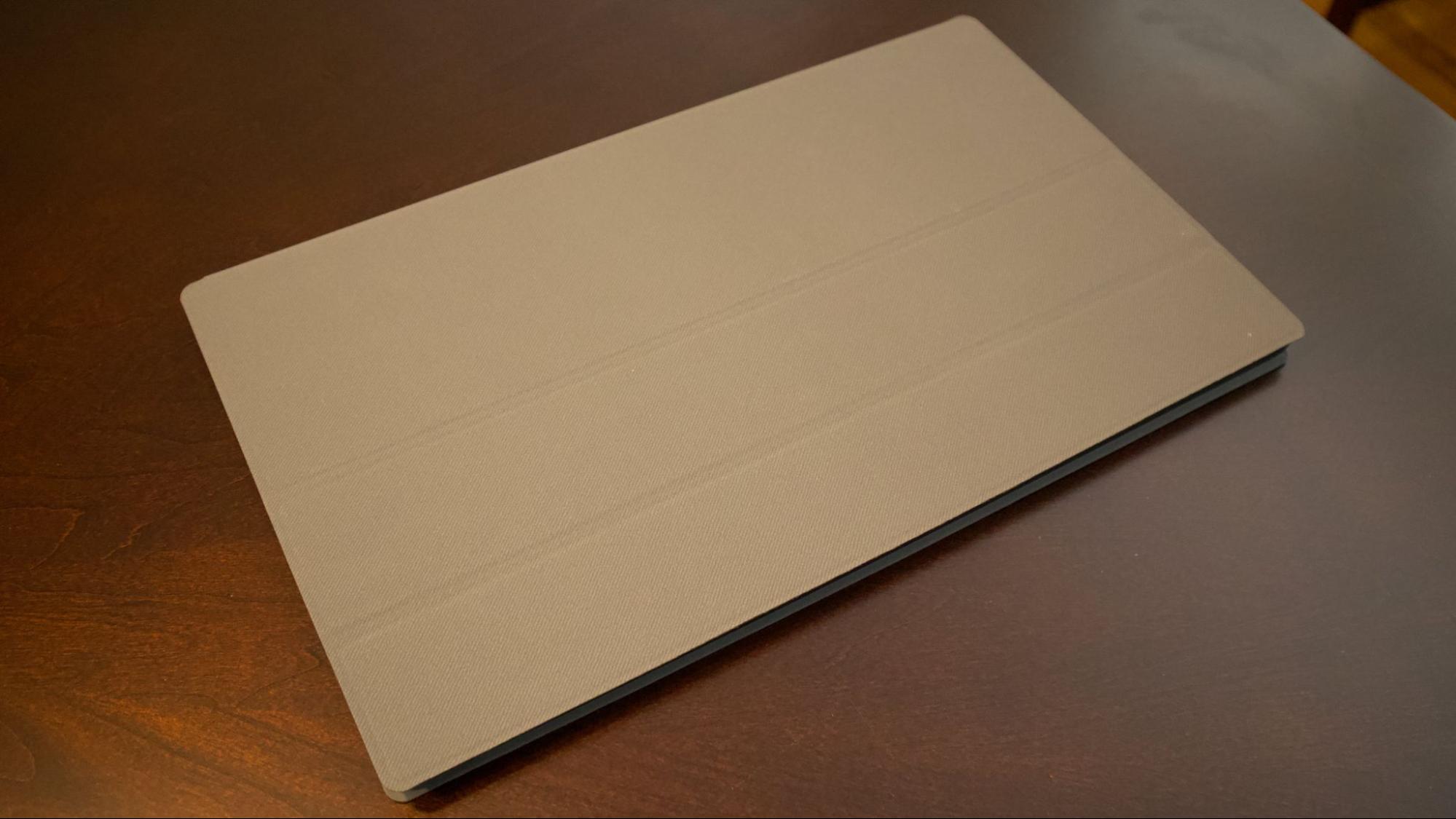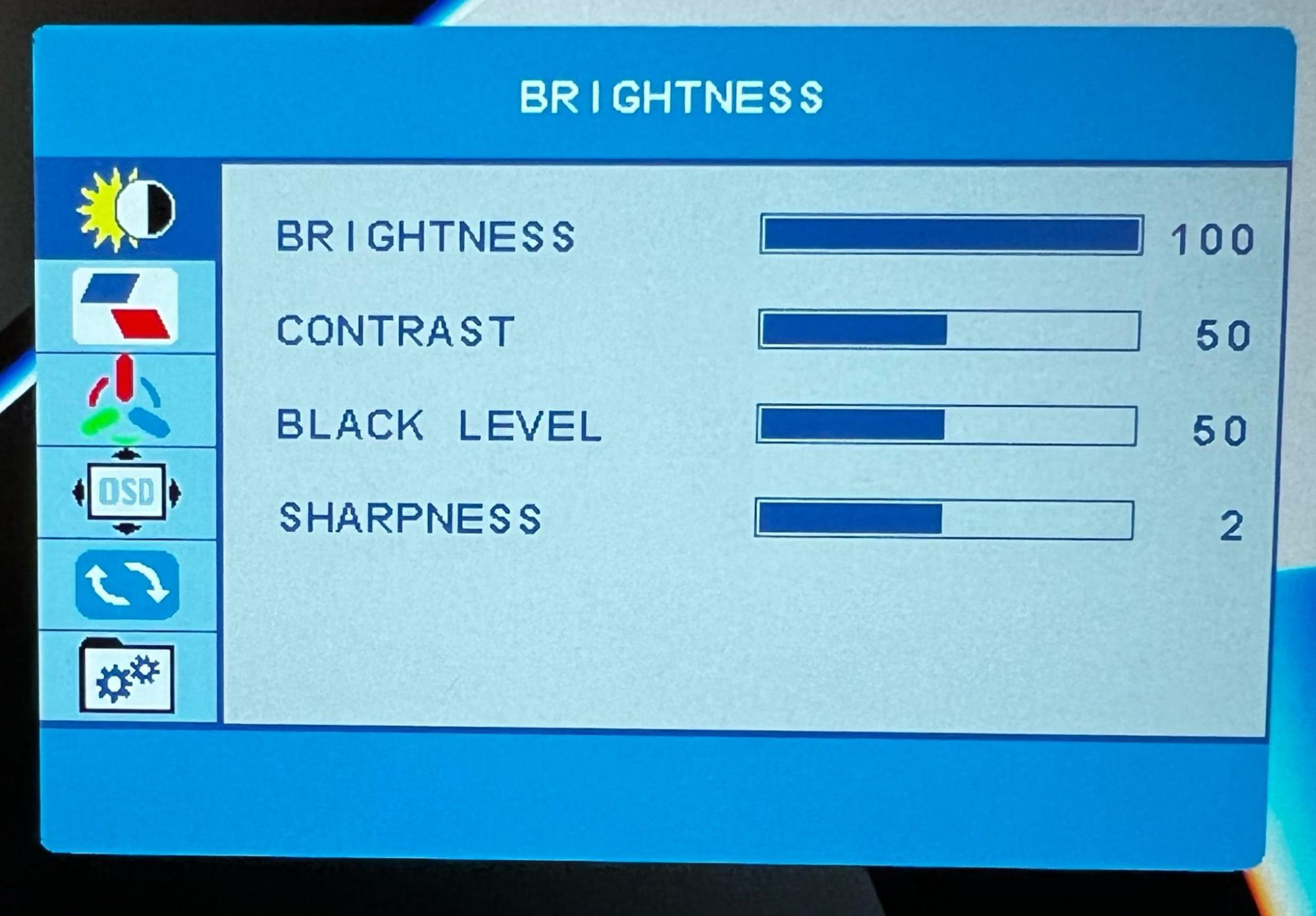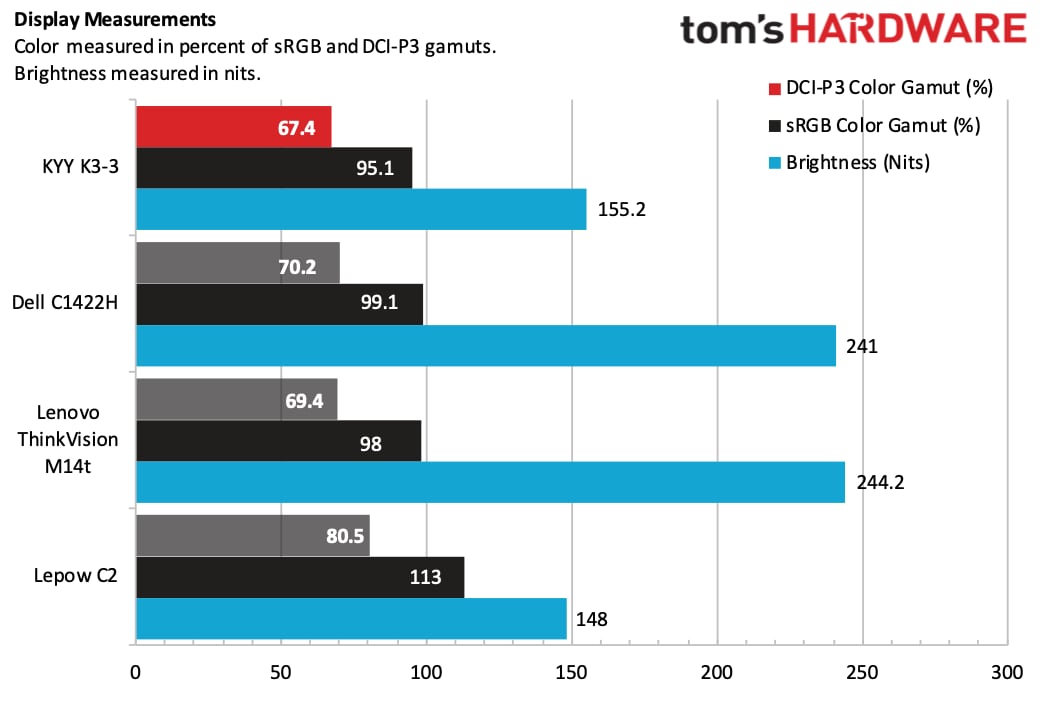Tom's Hardware Verdict
While the KYY K3-3 doesn't match manufacturer claims for brightness and color performance, it's still an all-around good portable monitor value.
Pros
- +
Bargain basement pricing
- +
4K resolution
- +
Excellent build quality
Cons
- -
No kickstand, smart cover is tedious to use
- -
Weak brightness
- -
Mediocre speakers
Why you can trust Tom's Hardware
The portable monitor category is flush with compelling options, ranging from budget entries like the $199 Lepow C2 to the impressive $600 Zion Pro with its 15.6-inch 4K AMOLED display. The KYY K3-3 hones closely to the budget realm in the pricing sphere for portable monitors but manages to deliver a 4K resolution which is much higher than the typical 1080p for monitors in this price category.
KYY also includes an origami-like smart cover in the case, a built-in speaker and a gaggle of cables to keep you powered up and connected on the go. With an asking price of just $249 as of this writing (and as low as $229 with additional discounts), the KYY K3-3 offers enough features and value to compete with the best portable monitors. However, the monitor has some tradeoffs in the form of low maximum brightness and the lack of a kickstand.
KYY K3-3 15.6-inch 4K Portable Monitor Specifications
| Panel Type / Backlight | IPS / WLED |
| Screen Size / Aspect Ratio | 15.6 inches / 16:9 |
| Max Resolution & Refresh Rate | 3840 x 2160 @ 60 Hz |
| Max Brightness | 400 nits |
| Contrast Ratio | 1,500:1 |
| View Angles | 178 degrees (Horizontal and Vertical) |
| Screen Coating | Anti-Glare |
| Ports | 1x Mini-HDMI, 2x USB-C (DisplayPort 1.2 Alt Mode), 1x Headphone |
| Speakers | Yes |
| Dimensions | 14.49 x 8.86 x 0.37 inches |
| Weight | 1.7 pounds |
Design of the KYY K3-3
The KYY K3-3 might have a budget price tag, but you certainly wouldn’t know it from looking at the portable monitor. It features a solid design, but while the top bezel is relatively thin, the side bezels are roughly twice as thick. And the bottom bezel is even larger (yet another doubling in size), where we find the center KYY logo.
I typically don’t find logos mounted in the bottom bezel offensive, as the typography is usually small and backed in muted colors that don’t draw attention. However, the KYY logo is large, features a bold font, and it’s bright white. While it draws attention to the branding of the monitor, it also routinely caught my eyes when I looked at the monitor, which is not a good thing. I like to be immersed in a panel when working, but the attention-grabbing logo was a frequent distraction.
Ports on the KYY K3-3
The right side of the KYY K3-3 serves as home to a mini HDMI and two USB-C ports (DisplayPort 1.2 Alt Mode). You can power the monitor directly and drive video using a single USB-C cable with a supported laptop. You can also rely on the included USB-C power adapter (the USB-C cable is not detachable) when connecting the monitor via HDMI.
One of the two speakers also resides on the right side of the monitor. Moving around to the left, you’ll find a 3.5mm headphone jack, a three-way scroll wheel, a single button and the other speaker. The scroll wheel and button are used to navigate through the on-screen display (OSD).
Stand / Case for the KYY K3-3
The monitor is constructed out of a tough and nice-feeling aluminum alloy material. It definitely feels more solid with minimal flex compared to its counterparts in this price segment. But though KYY didn’t skimp on materials for the K3-3’s chassis, it definitely cut costs by skipping a built-in kickstand. An integrated stand is preferable, as it’s one less thing to worry about when traveling and provides a more stable base. With the KYY K3-3, we’re given a smart cover that doubles as a screen protector and a stand.
Get Tom's Hardware's best news and in-depth reviews, straight to your inbox.
When used as a screen protector, the smart cover works quite well. It attaches magnetically to the back of the monitor and folds over to cover the display while in transport. However, using the smart cover as a stand is not very intuitive – I actually had to break out **gulp** the user manual to figure out how to use it.
You have to first attach the smart cover to the back of the monitor, then pivot the lower two-thirds of the panel to a 45-degree angle. Next, you fold the leading edge of the smart cover back and set the bottom of the KYY K3-3 to rest it on that folded edge.
It works, but it only gives you one angle to reliably use with the display. The inside surface of the smart cover is slightly grippy, so you can attempt to slide the display back for a more upright angle. However, we found it to be wobbly in these positions and any movement on my desk would cause it to slide to its default position.
With that being said, the KYY K3-3 is thinner than most monitors in this category. That can be attributed to its lack of a kickstand. The monitor measures just 0.37 inches thick compared to 0.46 for the Asus ROG XG16AHPE with its built-in kickstand and battery and 0.7 inches for the ThinkVision M14t.
KYY includes plenty of accessories in the box like the smart cover, a USB-C wall adapter, a USB-C to USB-C cable, and a mini-HDMI to HDMI cable.
On-screen Display for the KYY K3-3
I had a case of déjà vu when first interacting with the OSD for the KYY K3-3. It is the exact same interface that I encountered with the Lepow C2 -- same icons, same colors, and similar settings. While the Lepow C2 used four buttons in an awkward location to navigate the OSD, the KYY K3-3 uses a combination of a scroll wheel and a separate button. Pressing the button once brings up Quick Menu that toggles between the two USB-C and one HDMI inputs.
Pulling down on the spring-loaded scroll wheel brings up the Brightness Quick Menu, while pushing up gives you the Volume Quick Menu. Pressing in on the scroll wheel brings up the full OSD. However, this “action” button has a very long throw and has a mushy feel. I found that it took quite a few attempts to register a button press. Once in the OSD, you navigate up and down using the scroll wheel, and pressing in executes the command. The separate button backs you out of the OSD’s underlying menu system.
Image Quality of the KYY K3-3
As we previously mentioned, the KYY K3-3 is a 4K UHD (3840 x 2160) display with a 60 Hz IPS panel. KYY claims that the monitor’s contrast ratio clocks in at 1,500:1 and that it can hit a max brightness of 400 nits. Unfortunately, the KYY K3-3 came up well short of its claimed brightness numbers in our testing. We’re used to seeing portable monitors fall short by around 10 percent compared to manufacturer specs, but the KYY K3-3 couldn’t even muster up half of its claimed rating, coming in at 155.2 nits. That put the monitor just ahead of the less expensive Lepow C2 but far behind the Dell C1422H and Lenovo ThinkVision M14t.
The KYY K3-3 pulls up the rear in measured color performance, hitting 67.4 percent of the DCI-P3 color space and 95.1 percent of the sRGB color gamut. Once again, the KYY K3-3 came up short compared to the cheaper Lepow C2. However, a monitor available at this price likely will not be used for color-critical work. In everyday usage scenarios, the monitor met my expectations. The shortfalls in brightness levels were not an issue in an indoor environment, with the slider cranked to the max. Reflections from overhead lighting were not a factor at my desk, nor was light coming through my dining room table (likely aided by the anti-glare screen coating).
As a casual Star Wars fan, I turned to Disney+ to watch the first episode of Obi-Wan Kenobi. I played scenes from the episode simultaneously on my workhorse 14-inch MacBook Pro with its vibrant Mini LED display side-by-side with the KYY K3-3 and noticed just tiny differences between the screens in detail and color. However, the color palette for Star Wars films and TV shows isn't exactly what I would call expansive. There are a lot of earth tones and muted colors.
For a film with a much wider color palette, I selected one of my favorite animated flicks of all time: Toy Story 3. I chose one scene in particular because I'm a sucker for having my emotional heartstrings pulled. The final sequence in the movie has Andy delivering his toys to Bonnie, and unbeknownst to him, Woodie is tucked away in the box. The scene is rich with color, from the lush green grass to Bonnie's pink tutu, Andy's steel blue eyes, and Jessie's red-tinged hat. I'm not going to say that I shed a tear for the hundredth time watching this scene, but it looked amazing and I couldn't believe that I was looking at a display that is available for as little as $229 on sale.
I appreciated the added screen real estate with the portable 4K display. The KYY K3-3 was right at home as an extended display for my MacBook Pro. I find 1080p to be a bit limiting with regards to the apps that I use in my daily workflow. So, the KYY K3-3 helped provide a bit more breathing room for my frequently used apps like Microsoft Edge, Safari, Slack, Microsoft Word, Pixelmator Pro and NetNewsWire.
But while I was impressed overall with the everyday visual performance of the KYY K3-3, the internal speakers were sadly not up to par. Speakers on portable monitors are typically an afterthought, and that is also the case here. They'll work in a pinch if you don't have anything better, but they are woefully inadequate even compared to the speakers on most entry-level laptops. There's no sense of depth to the sound, and music playback was lacking in dynamic range and bass.
Bottom Line
The KYY K3-3 is an interesting product, mainly because it tries to pack in high-end specs like a 4K IPS panel at a bargain-basement price. KYY is not entirely successful, as we saw in our instrumented testing, but the K3-3 makes a bold statement in actual everyday use.
I was impressed by its performance as a productivity and light entertainment monitor. Watching TV shows and live content on the display as I worked on my laptop was enjoyable. I wasn’t impressed with the built-in stereo speakers, but that comes with the territory with inexpensive portable monitors. While I commend KYY for including the smart cover to protect the K3-3 when transported, I wish that it didn’t also double as the monitor’s stand. It’s finicky and not adjustable for angle. I would have liked to have seen an integrated, hinged stand as we see in the various Asus, Lenovo, and Viewsonic counterparts.
If you don’t need the 4K resolution, the Lepow C2 is a nice alternative for less than $200. The Viewsonic VX1755 is also another good option with a 17.2-inch 144 Hz FreeSync display, priced at $299.
However, with an MSRP of $299, and an everyday price of $249 (as low as $229 as of this writing), the KYY K3-3 represents a true value play in the portable monitor sector. We wouldn’t recommend it for color-critical work, but if you’re simply looking for a monitor that will expand your workspace without robbing your wallet, the KYY K3-3 is a compelling product.

Brandon Hill is a senior editor at Tom's Hardware. He has written about PC and Mac tech since the late 1990s with bylines at AnandTech, DailyTech, and Hot Hardware. When he is not consuming copious amounts of tech news, he can be found enjoying the NC mountains or the beach with his wife and two sons.
